YouTube has transformed the media landscape, giving rise to a new generation of self-made celebrities. These creators captivate audiences worldwide with videos that entertain, educate, and inspire. If you’re a content creator on this platform, numerous avenues exist to monetize your passion and hard work.
This guide explores effective strategies for making money on YouTube, ranging from leveraging built-in platform features to venturing into external avenues that can amplify your earning potential. Discover how to turn your YouTube channel into a profitable venture and learn from the success of top creators.
Key Strategies to Monetize Your YouTube Channel
1. Joining the YouTube Partner Program (YPP)
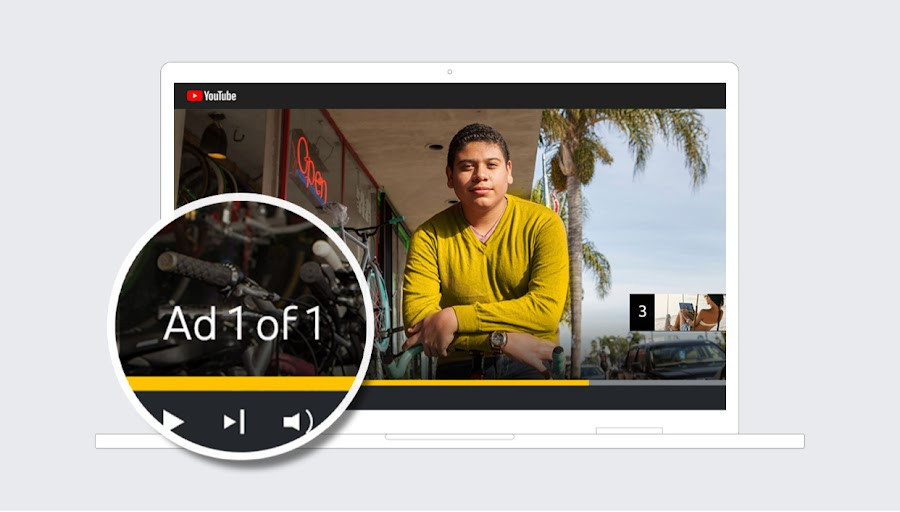 YouTube Partner Program monetization options displayed on YouTube Studio
YouTube Partner Program monetization options displayed on YouTube Studio
The YouTube Partner Program (YPP) is the foundational step for most creators looking to monetize their content directly through YouTube. By joining the YPP, creators unlock access to a suite of monetization tools designed to generate revenue from various content formats, including Shorts, livestreams, and standard videos.
Benefits of the YouTube Partner Program:
- Ad Revenue Sharing: Earn a portion of the revenue generated from ads displayed on your videos and between Shorts. This is often the most accessible monetization method for new partners.
- YouTube Premium Revenue: Receive a share of revenue from YouTube Premium subscribers who watch your content. This provides a revenue stream directly tied to viewer engagement and platform loyalty.
- Fan Funding and Engagement Features: Access Super Chat, Super Thanks, and channel memberships, allowing your audience to directly support you through tips and recurring subscriptions, fostering a stronger community.
- YouTube Shopping Integration: Utilize YouTube Shopping to showcase and sell your products directly to your audience within the YouTube ecosystem, streamlining the path from content discovery to purchase.
Beyond monetization, the YPP also provides access to crucial creator resources such as YouTube’s creator support and the Copyright Match tool. The Copyright Match tool is particularly valuable for protecting your original content from unauthorized use, ensuring your work remains exclusively yours.
While the YPP is a significant gateway to monetization, it’s important to note that it’s not the only path to earning on YouTube. Diversifying your income streams by directing viewers to external platforms, such as your online store or affiliate partnerships, and creating sponsored content, can significantly enhance your overall revenue. However, membership in the YPP often simplifies and enhances the effectiveness of these alternative methods.
With YouTube having distributed over $50 billion to YPP members in the last three years, joining the program can be a lucrative step if you meet the eligibility criteria.
Eligibility and Application for the YouTube Partner Program:
To become a part of the YouTube Partner Program and unlock its monetization features, your channel must meet specific benchmarks:
- Subscriber Count: Achieve a minimum of 1,000 subscribers to demonstrate a substantial audience base.
- Watch Hours or Shorts Views: Accumulate either 4,000 valid public watch hours in the past 12 months for longer videos or 10 million valid public Shorts views in the last 90 days, indicating active content consumption.
Meeting these criteria is just the start. Your channel must also maintain good standing with YouTube’s community guidelines and adhere strictly to all YouTube’s monetization policies, ensuring content is advertiser-friendly and respectful. Furthermore, you must reside in a region eligible for the YPP.
Once you fulfill these requirements, applying is straightforward. Navigate to YouTube Studio, access your channel dashboard, and find the “Earn” tab in the left-hand menu to begin your application process.
2. Activating Ads on Your YouTube Videos
 YouTube Partner Program monetization options displayed on YouTube Studio
YouTube Partner Program monetization options displayed on YouTube Studio
Once accepted into the YouTube Partner Program, the most direct method to start generating revenue is by enabling advertisements on your videos. YouTube’s advertising platform is highly automated, simplifying the process for creators.
When you enable ads for a long-form video, YouTube automatically integrates pre-roll and post-roll ads, which may be skippable or non-skippable depending on ad formats. While you don’t have direct control over the specific ads shown, for videos exceeding eight minutes, you gain the option to insert mid-roll ads. These can be strategically placed manually or automatically by YouTube to optimize viewer experience and ad revenue.
To monitor your ad performance and earnings, visit the “Revenue” tab within YouTube Studio. This section provides detailed reports on your ad revenue, including estimated monthly earnings from monetized videos, helping you track your financial progress.
Beyond Basic Ad Monetization:
While YouTube ads offer a relatively simple and passive income stream, relying solely on ad revenue might not be sufficient for substantial earnings. To maximize your income, consider diversifying with other monetization strategies.
YouTube’s demonetization policy can sometimes be perceived as stringent by creators. Content deemed not “advertiser-friendly” may face limitations, affecting ad revenue. Additionally, YouTube retains a significant portion of ad revenue—45% for standard videos and 55% for Shorts—impacting the net earnings for creators.
To enhance ad revenue, focus on creating content that is both engaging for your audience and attractive to advertisers. This balance is crucial for sustainable growth and income generation on YouTube.
3. Engaging Audience Support Through Fan Funding
 Patreon creator page example showcasing membership tiers and benefits
Patreon creator page example showcasing membership tiers and benefits
For creators within the Partner Program, YouTube offers built-in fan funding features that enable viewers to directly support channels they love. These tools foster a closer creator-fan relationship and provide a more predictable revenue stream compared to fluctuating ad earnings.
YouTube’s Fan Funding Tools:
- Super Chat, Super Stickers, and Super Thanks: These features allow viewers to purchase highlighted messages during livestreams and video premieres. Super Chat and Super Stickers make comments stand out in the live chat, while Super Thanks lets viewers send direct appreciation on uploaded videos. These are effective for real-time engagement and immediate support.
- Channel Memberships: Offer viewers exclusive perks and content in exchange for recurring monthly payments. YouTube allows up to six membership levels, each with increasing benefits. Membership perks can include custom badges and emojis for chat and comments, members-only community posts, exclusive early access to videos, and private live chats. Channel memberships build a loyal community and provide a stable monthly income.
Exploring External Fan Funding Platforms:
Beyond YouTube’s native tools, platforms like Patreon offer robust solutions for fan funding. Patreon allows creators to offer tiered memberships with varied rewards, such as bonus content, exclusive access, and personalized interactions, in return for regular donations.
While Patreon and similar platforms may require investment in additional exclusive content to incentivize donor support, they provide a well-established and trusted system for your audience to contribute financially to your channel’s growth on an ongoing basis.
Alternative fan funding platforms to Patreon include Buy Me a Coffee and Ko-fi, each offering unique features and benefits for creators seeking direct audience support.
4. Selling Merchandise and Products via YouTube Shopping
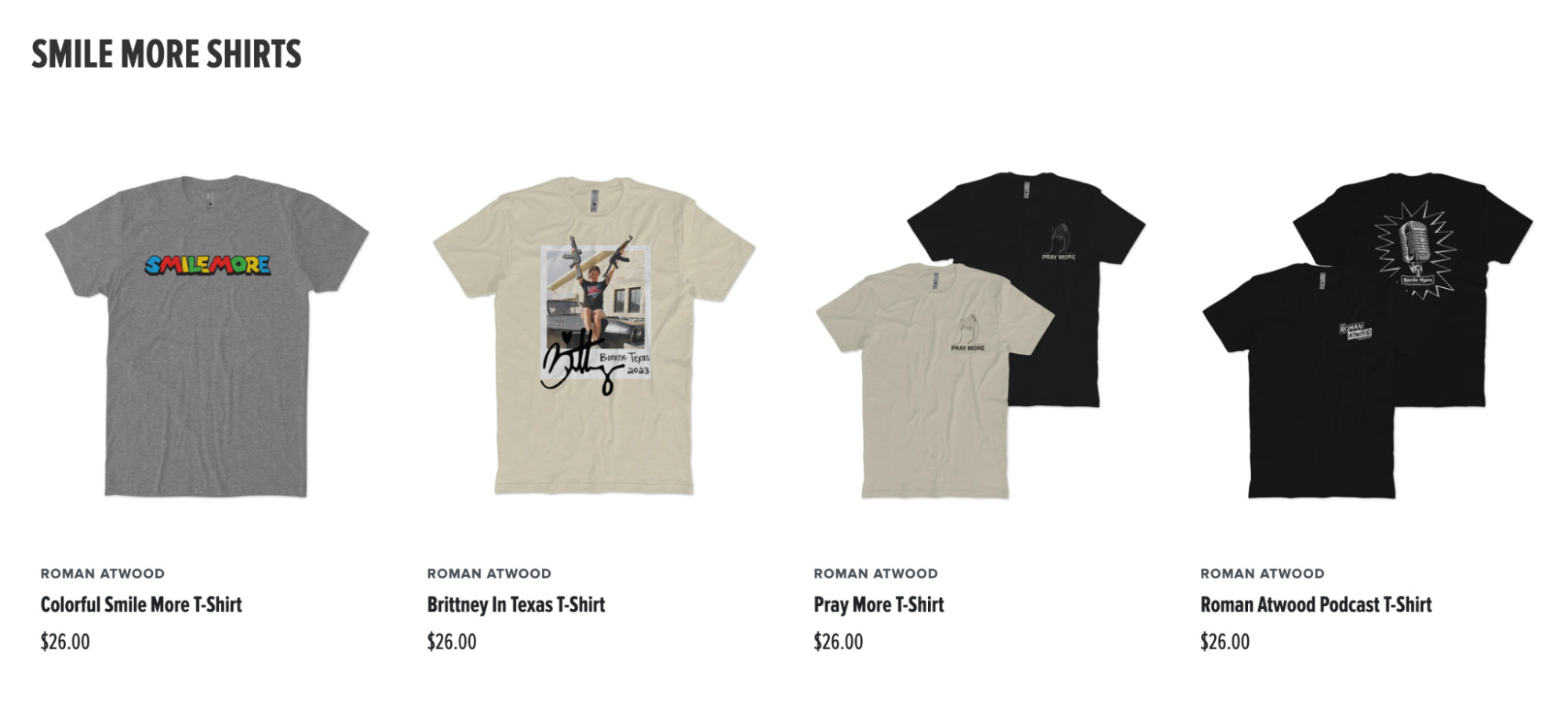 Online store category page displaying various branded t-shirts
Online store category page displaying various branded t-shirts
YouTube Shopping presents a seamless way for creators to sell merchandise directly to their audience. It integrates e-commerce functionalities directly into the YouTube platform, allowing viewers to browse and purchase products without leaving YouTube.
Utilizing YouTube Shopping:
- Channel Storefront: Establish a dedicated storefront directly on your YouTube channel. This centralizes your product offerings, making it easy for viewers to find and purchase your merchandise.
- Connected Online Store Integration: Link your existing online store, such as a Shopify store, to your YouTube channel. This automatically syncs your product listings, ensuring consistency across platforms and simplifying inventory management.
- Product Tagging in Videos: Tag products within your videos and livestreams. These tags appear as interactive elements, allowing viewers to click and learn more about or purchase featured items directly from the video interface.
According to YouTube data, over 160,000 creators are already leveraging YouTube Shopping to sell their products, highlighting its growing popularity and effectiveness.
Many creators successfully promote merch like apparel (tote bags, snapbacks, t-shirts), accessories, and branded items. Others recommend and link to products from brands they review or partner with, blending merchandise sales with affiliate marketing strategies.
Creating and selling branded merchandise is more accessible than ever. Print-on-demand services simplify the process by handling production and shipping, allowing you to focus on design and promotion without managing inventory.
Setting Up YouTube Shopping with Shopify:
The most efficient way to implement YouTube Shopping is by connecting your Shopify store to your YouTube channel. This integration synchronizes your product catalog, enables product tagging in videos, and manages transactions, providing a streamlined sales experience for both you and your audience.
If you don’t have an online store yet, starting one with Shopify is straightforward, often with a free trial period to explore the platform and set up your store.
Call to Action:
Start selling your products on YouTube from Shopify
Shopify offers powerful tools designed to facilitate selling on YouTube, from product synchronization to sales management, making it an ideal platform for YouTube-based e-commerce.
5. Collaborating with Brands as an Influencer
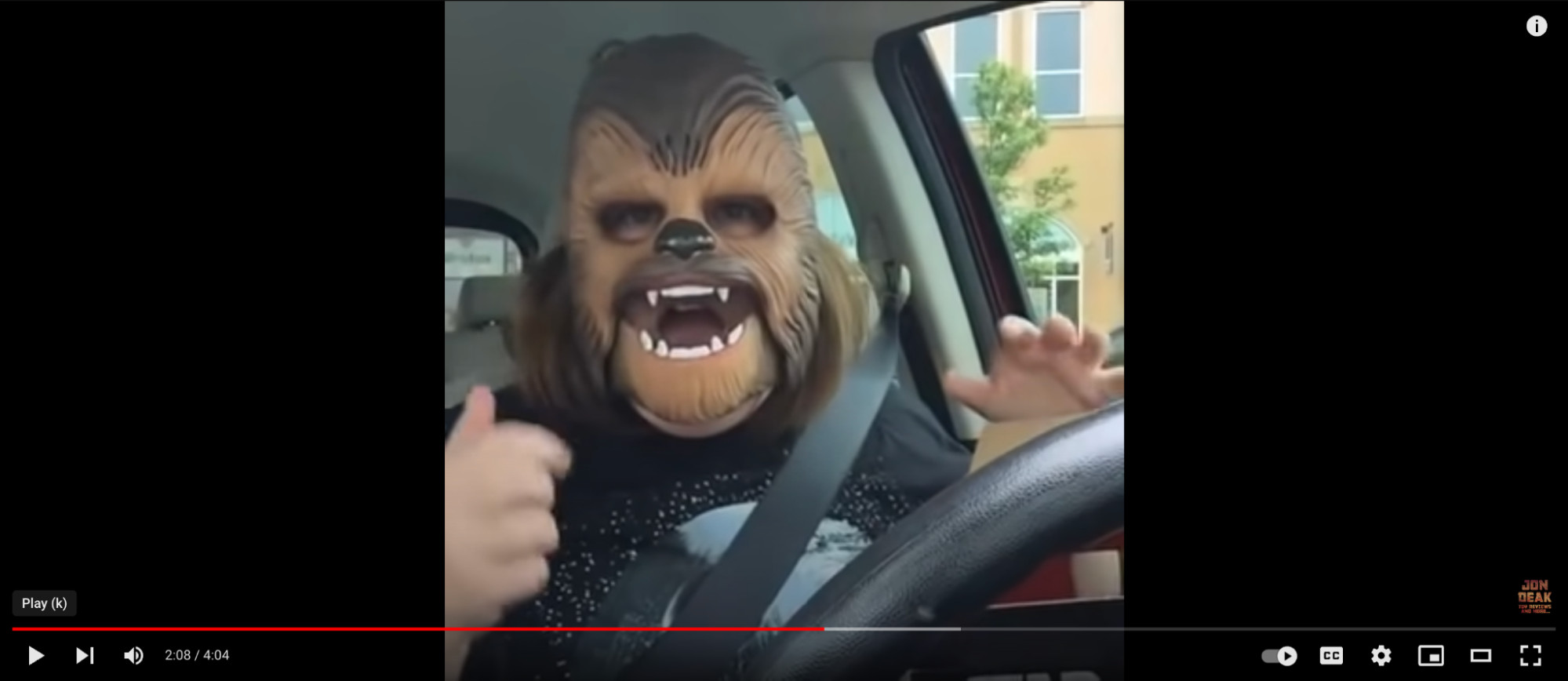 YouTube influencer Brendan Gahan discussing brand partnerships in a video
YouTube influencer Brendan Gahan discussing brand partnerships in a video
Influencer marketing is a rapidly growing sector, with brands increasingly investing in collaborations with content creators who have established engaged audiences. This trend presents significant opportunities for YouTubers to earn through brand sponsorships.
As a creator, you can negotiate deals with brands to feature their products or services in your content in exchange for compensation. This could involve product reviews, sponsored videos, brand mentions, or integrated campaigns.
Brendan Gahan, a YouTube marketing expert, suggests a method for determining your baseline rate for sponsored content. He recommends calculating your average video view count and multiplying it by a rate of 5¢ to 15¢ per view to establish a starting point for negotiations.
Your negotiation power will depend on various factors, including your target audience demographics, the quality and engagement of your content, and the uniqueness and profitability of your niche. Channels with highly specific and engaged audiences often command higher sponsorship rates.
Transparency and authenticity are crucial when creating brand-sponsored content. It is essential to clearly disclose the sponsorship to your audience and only endorse products or services that genuinely align with your channel’s values and that you personally believe in. Maintaining trust with your audience is paramount for long-term success in influencer marketing.
6. Licensing Your Content to Media Outlets
 YouTube influencer Brendan Gahan discussing brand partnerships in a video
YouTube influencer Brendan Gahan discussing brand partnerships in a video
If you create a video that goes viral and captures widespread attention, you have the opportunity to license your content to media outlets for monetary compensation. Viral videos, especially those with broad appeal or unique content, are highly sought after by news organizations, television programs, and online platforms.
When a video goes viral, media outlets—including TV news channels, morning shows, online news sites, and even other creators—may reach out to request the rights to use your video. Licensing your content to these outlets can generate revenue with minimal additional effort on your part.
You can also proactively list your videos on content licensing marketplaces like Jukin Licensing. These platforms specialize in connecting content creators with media buyers, making it easier for your viral videos to be discovered and licensed by interested parties.
Licensing is particularly effective for videos that capture unexpected events, humorous moments, or unique perspectives that are valuable to news and entertainment media.
7. Crowdfunding Your Creative Projects
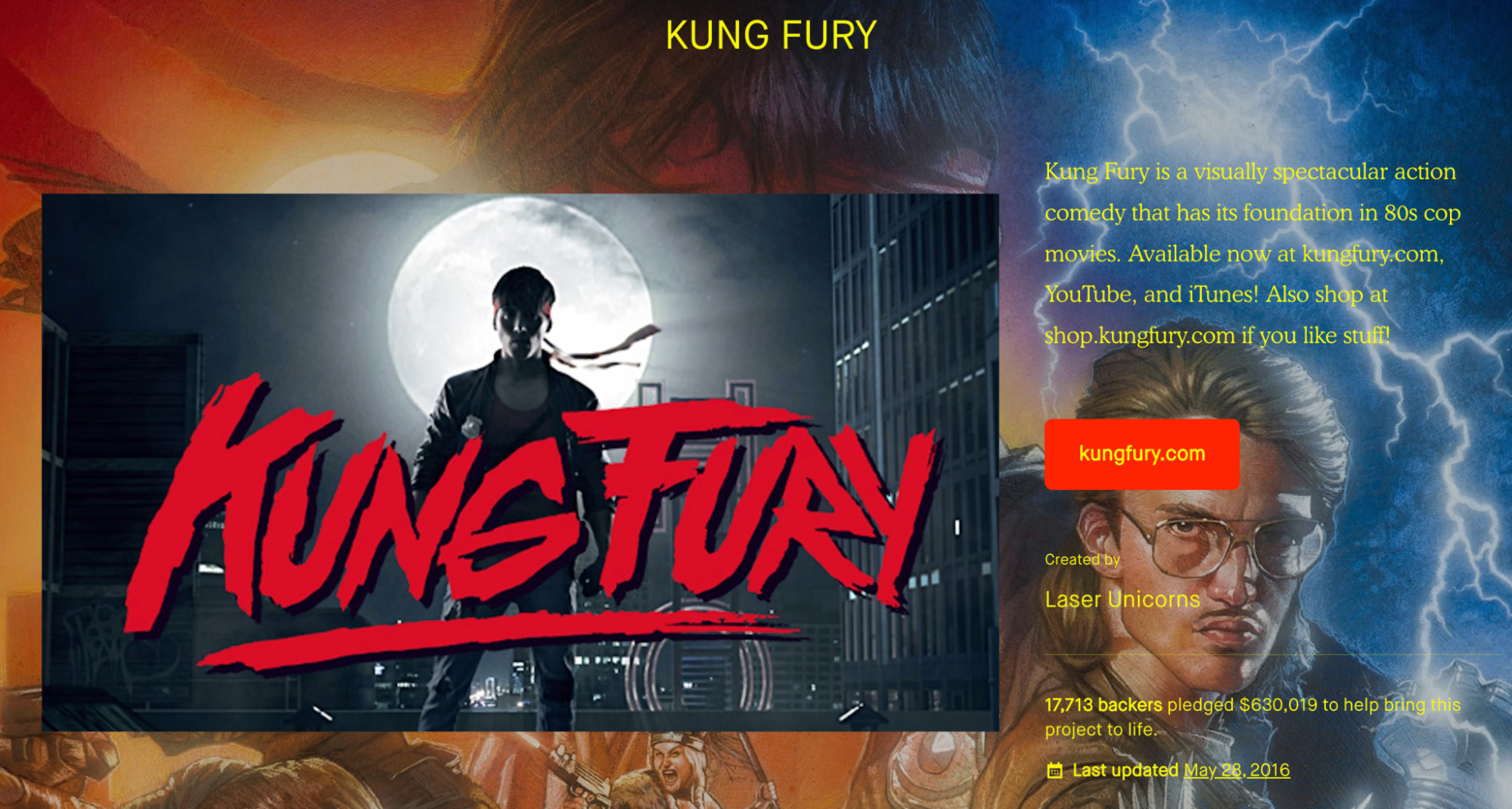 Kickstarter campaign page for the movie Kung Fury
Kickstarter campaign page for the movie Kung Fury
Crowdfunding offers a powerful way to finance ambitious creative projects that require upfront capital. Whether you need to upgrade equipment, hire collaborators, or cover production expenses for a more elaborate video, crowdfunding platforms can help you raise funds directly from your audience and community.
To successfully crowdfund a project, it’s crucial to present a compelling pitch that excites potential backers. Many successful crowdfunding campaigns for YouTube-related projects include a sneak peek or trailer that showcases the project’s potential and generates enthusiasm. Consider shooting a video that clearly explains your project, its goals, and what you hope to achieve with the funding.
Popular crowdfunding sites frequently used by YouTubers include Kickstarter and Indiegogo. These platforms provide the tools and reach to effectively present your project to a broad audience and manage contributions.
Crowdfunding is particularly suited for projects that resonate deeply with your audience and offer unique value or entertainment, motivating them to contribute to seeing your vision realized.
8. Leveraging Affiliate Marketing
 YouTube influencer Brendan Gahan discussing brand partnerships in a video
YouTube influencer Brendan Gahan discussing brand partnerships in a video
Affiliate marketing is a performance-based monetization strategy where you earn a commission by promoting products or services from other brands within your videos. It’s an effective way to generate income, particularly if your content naturally involves product reviews, tutorials, or recommendations.
To become an affiliate marketer, start by identifying affiliate programs that align with your content niche and audience interests. Relevance is key—promoting products that genuinely appeal to your viewers increases the likelihood of successful conversions and earnings.
Once you’re enrolled in relevant affiliate programs, you can incorporate affiliate links into your video descriptions, end screens, and info cards. When viewers click these links and make a purchase, you earn a predetermined commission.
Affiliate marketing is especially effective for channels that review products. Since brands only pay commissions on actual sales, it’s often easier to get started with affiliate partnerships. Always ensure you clearly disclose your affiliate relationships to maintain transparency and trust with your audience.
YouTube simplifies affiliate marketing through its Shopping affiliate program, which helps creators discover relevant products and view commission rates. Once you find products you wish to promote, you can easily tag them directly in your videos using YouTube Shopping features.
Participation in the official YouTube Shopping affiliate program typically requires membership in the Partner Program and adherence to YouTube’s eligibility criteria.
For Product Creators: Recruiting Affiliates:
If you have your own product line, consider recruiting affiliates to expand your reach and sales.
Eligible Shopify merchants can easily add their products to the YouTube Shopping affiliate program, making them available for YouTube creators to promote. By syncing your products through the Shopify YouTube app and setting competitive commission rates, you can incentivize creators to feature your products in their content, driving sales and brand visibility.
Call to Action:
Learn more about YouTube Affiliate Marketing
Expand your product’s market reach by leveraging YouTube’s affiliate network and enabling creators to promote your offerings directly to engaged audiences.
Understanding YouTube Earnings: Key Metrics
YouTube Views and Revenue: What’s the Connection?
 YouTube influencer Brendan Gahan discussing brand partnerships in a video
YouTube influencer Brendan Gahan discussing brand partnerships in a video
While high view counts are often seen as a measure of success on YouTube, the direct correlation between views and revenue is not straightforward. The number of views your video receives does not directly translate to earnings. Revenue is generated when viewers engage with ads by either clicking on them or watching them in full (for non-skippable ads, typically 15 to 30 seconds).
According to data from Influencer Marketing Hub, the average YouTube channel earns approximately 1.8¢ per view, which equates to about $18 per 1,000 views. However, this is a highly variable average.
If your video accumulates thousands of views but viewers skip ads immediately or do not engage with them, your ad revenue will be minimal. YouTube’s advertiser billing criteria are based on ad engagement, not just video views.
Annual Earnings of YouTubers: From Average to Top Tier
Top-tier YouTubers like MrBeast can generate tens of millions of dollars annually through their multifaceted YouTube businesses, which often extend beyond just ad revenue to include merchandise, sponsorships, and other ventures.
However, earning a substantial income on YouTube is not exclusive to mega-channels. Smaller channels with dedicated audiences can also achieve financial sustainability.
Consider Justine Leconte, whose fashion-focused YouTube channel with one million subscribers provides valuable style advice. Based on estimated ad revenue alone, her annual earnings are projected around $259,304, averaging approximately $979 per video, according to Influencer Marketing Hub’s YouTube Money Calculator.
These figures suggest that even with a focused niche and consistent content creation (Justine posts one to two videos weekly), creators can earn a viable living from YouTube. It’s crucial to remember that these are estimations, and actual earnings can fluctuate based on diverse monetization strategies employed by each creator.
Maximizing YouTube Revenue: Key Factors
 YouTube Partner Program monetization options displayed on YouTube Studio
YouTube Partner Program monetization options displayed on YouTube Studio
Monetization is achievable for YouTube channels of various sizes, not just those with millions of subscribers. Your earning potential is influenced by several factors:
- Audience Engagement: Higher watch time and ad interaction rates directly boost ad revenue.
- Niche Specificity: Catering to a specialized niche can attract higher CPM (cost per mille) rates from advertisers targeting specific demographics.
- Diversification of Revenue Streams: Utilizing multiple monetization methods—ads, merch, sponsorships, fan funding, etc.—maximizes overall income potential.
While the list of top YouTube earners may suggest that YouTube earnings primarily come from direct ad revenue, in reality, these channels often have diversified income streams, with merchandise and brand deals playing significant roles. Building a dedicated audience is the foundational step. Once you have an engaged viewer base, exploring and implementing diverse revenue streams becomes more effective.
If your goal is to make money on YouTube as part of your broader marketing strategy, the initial focus should always be on deeply understanding your target audience and creating content that resonates with them.
Tips for Effective Selling on YouTube
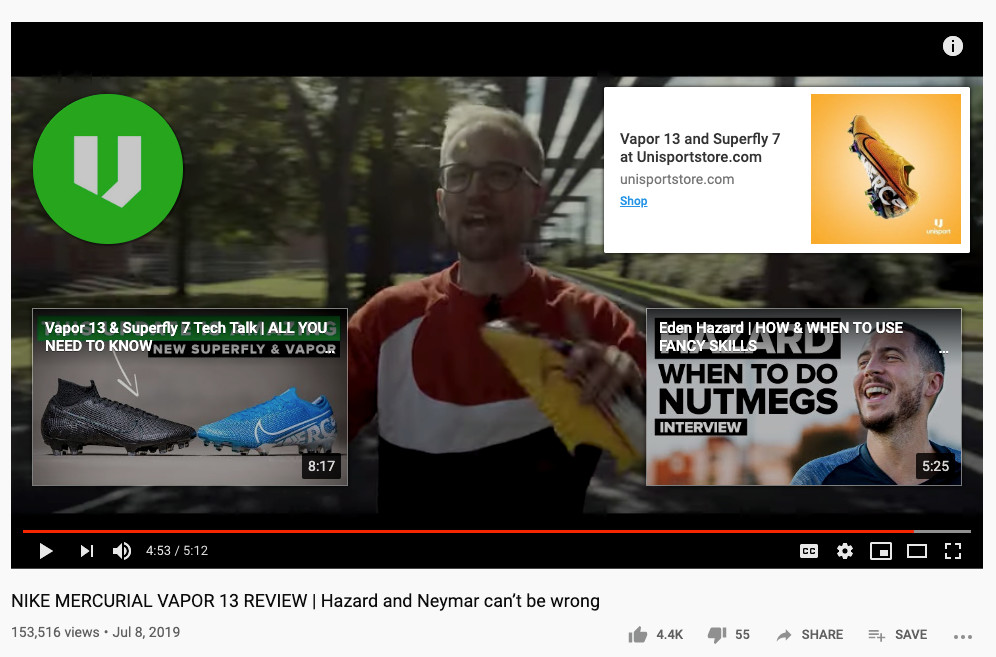 YouTube video example with info cards and product promotion
YouTube video example with info cards and product promotion
Many YouTube monetization strategies involve product promotion. However, integrating promotions effectively without compromising content integrity is crucial to maintain audience trust and engagement.
Balancing monetization with content quality is key. While seeking compensation for your work is essential for sustainability, overt or excessive promotion can alienate your audience.
Best Practices for Integrating Promotions:
Understand Your YouTube Audience Deeply
Building a loyal audience positions you favorably for monetization. However, maximizing opportunities requires a thorough understanding of your audience demographics and preferences.
For many YouTubers, specializing in a niche channel facilitates collaborations with brands targeting specific audience segments. Key audience metrics to analyze include:
- Gender Distribution: Understand if your audience skews towards a particular gender.
- Age Range: Identify the primary age groups within your audience.
- Geographic Location: Determine the countries and regions where your videos are most watched.
- Audience Engagement Metrics: Analyze watch time, average view duration, and audience retention to gauge overall engagement levels.
These demographic insights, accessible through YouTube Analytics, empower you to better understand your audience and align effectively with brand partnerships and promotional strategies.
Utilize YouTube Info Cards Strategically
Info cards (formerly YouTube Cards) are a non-intrusive way to draw viewer attention to promotions, whether for brand collaborations or your own products.
Employ free video editing software to insert info cards at relevant moments in your videos. Time their appearance to coincide with related content, making them feel natural and less disruptive, thus increasing their effectiveness.
Leverage Video Descriptions for Links
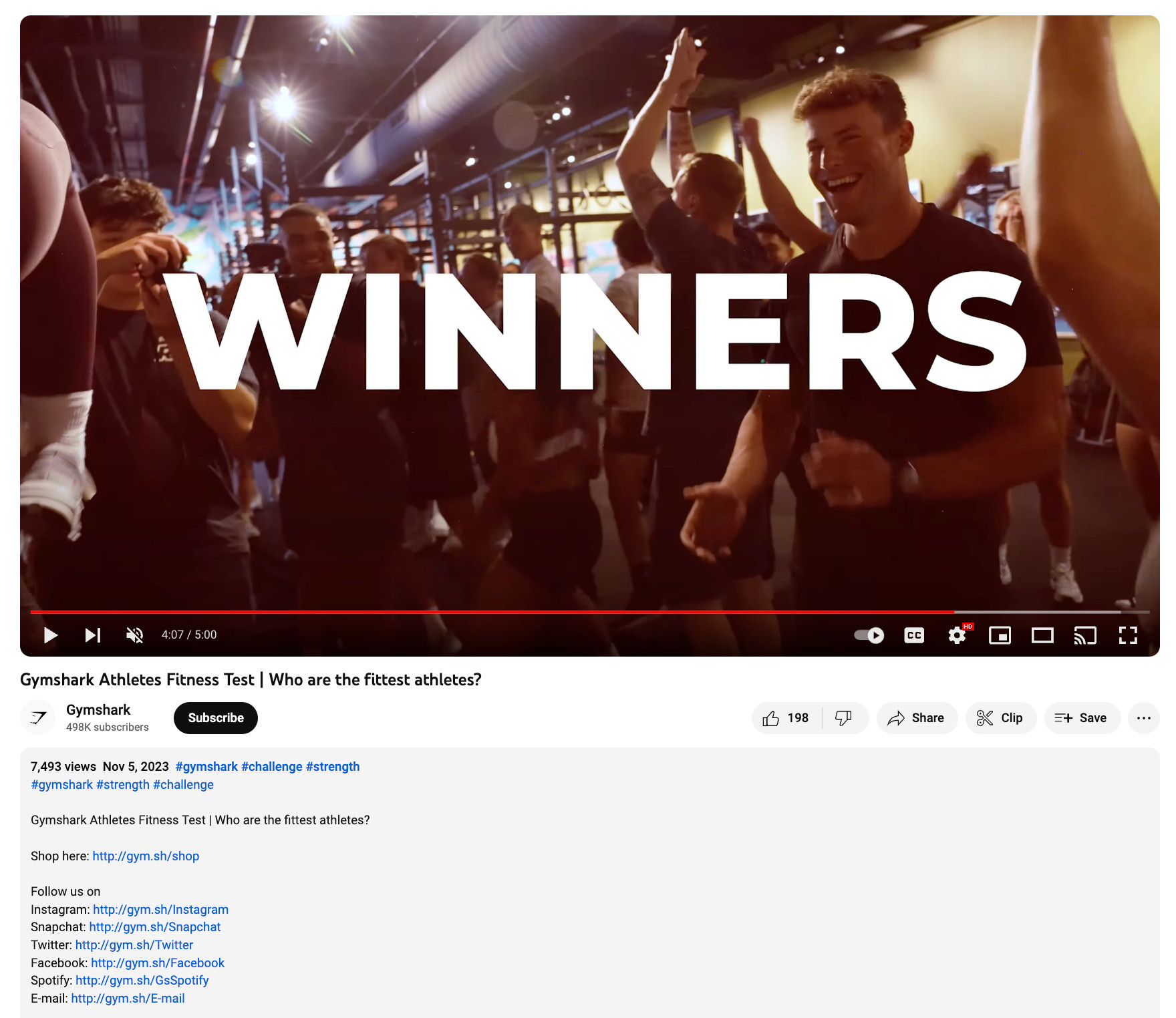 YouTube video description example with social media and product links
YouTube video description example with social media and product links
Video descriptions are prime real estate for directing viewers to external platforms, such as your online store, Patreon page, crowdfunding campaign, or affiliate product links.
Consistently add relevant links in your video descriptions. Make it easy for viewers to access more information or make purchases related to your content directly from the video page.
Promote Your YouTube Offers Across Platforms
Maximize the visibility of your YouTube promotions by extending your reach beyond the platform itself.
Utilize other social media channels like X (formerly Twitter), Facebook, Instagram, and any other platforms where you have a presence to announce new campaigns, product launches, or special offers featured on your YouTube channel.
Cross-promotion across multiple platforms amplifies your message and increases the likelihood of reaching a broader audience. Cultivating a following beyond YouTube through effective social media marketing is a valuable strategy for expanding your overall reach and impact.
The Ascendancy of the Content Creator
 YouTube influencer Brendan Gahan discussing brand partnerships in a video
YouTube influencer Brendan Gahan discussing brand partnerships in a video
For many creators, the initial drive is passion, not profit. However, with a well-defined monetization strategy, YouTubers can transform their passion into a sustainable career, reaping the rewards of their dedication and creative labor in navigating the complexities of the YouTube algorithm.
The journey of creators like MrBeast, who started making videos at 13 and spent years refining his content and understanding YouTube’s dynamics, exemplifies this.
For businesses, audience acquisition and attention retention are perennial challenges. YouTubers have already mastered this critical aspect. By building engaged communities, they not only entertain and inform but also create significant economic opportunities for themselves and brands alike.
From budding entrepreneurs to established global retailers, platforms like Shopify support diverse business models, enabling creators to monetize their YouTube presence effectively. Explore Shopify plans and pricing.
Further Resources
Read More: [Link to related article on Money Central (if available)]
Frequently Asked Questions: Making Money on YouTube
How Many Views Are Needed to Make Money on YouTube?
The number of views alone does not determine YouTube earnings. Monetization depends on ad engagement, such as clicks or complete views of video ads. High view counts without ad interactions yield minimal revenue. YouTube compensates creators based on advertiser billing criteria, which prioritize ad engagement over mere video views.
What is the Average Pay per 1,000 Views on YouTube?
On average, YouTube channels earn around 1.8¢ per view, translating to approximately $18 per 1,000 views, based on data from Influencer Marketing Hub. However, this is an average and can vary significantly based on audience demographics, niche, and ad engagement rates.
Does YouTube Pay for Uploading Videos?
YouTube does not directly pay creators for uploading videos. To monetize content, creators must enable monetization in their YouTube account settings. This unlocks options to join the YouTube Partner Program or participate in YouTube Premium revenue sharing. Earnings are generated through ad revenue, YouTube Premium subscriptions, and other monetization features within the YPP.
What Are the Primary Ways YouTubers Make Money?
YouTubers employ various monetization methods, including:
- Joining YouTube’s Partner Program to access ad revenue and fan funding features.
- Selling products or merchandise through YouTube Shopping and integrated stores.
- Crowdfunding creative projects via platforms like Kickstarter and Patreon.
- Securing fan funding through Super Chat, Super Thanks, and channel memberships.
- Licensing viral content to media outlets for usage rights.
- Collaborating with brands as influencers for sponsored content.
- Participating in affiliate marketing to earn commissions on product sales.
How Can One Make Money on YouTube Without Creating Videos?
One way to leverage YouTube for income without creating videos is by partnering with established YouTube creators. If you have products to promote, you can collaborate with YouTubers who can feature your products to their audience through affiliate partnerships. Shopify users can utilize YouTube’s affiliate marketing program to easily connect with creators who can promote their products within their videos, enabling viewers to purchase directly while watching content.

